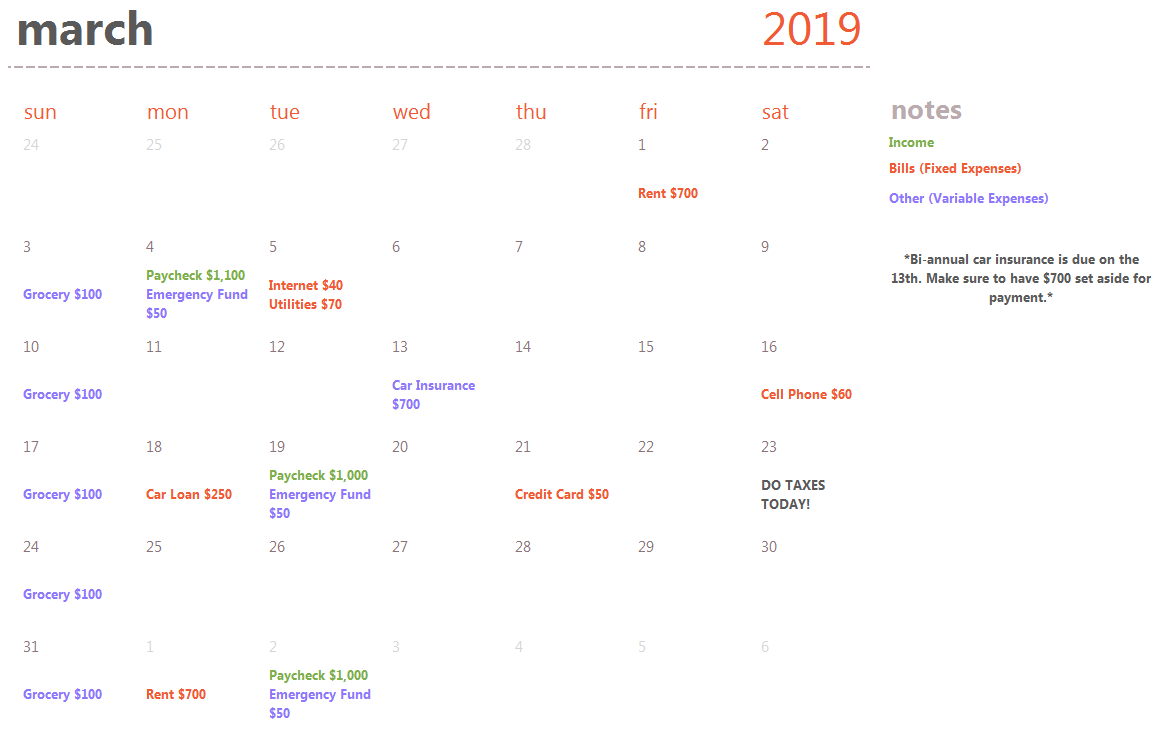How to Create the Perfect Financial Calendar
Keeping a financial calendar is a different approach to budgeting than the traditional spreadsheet. It is an excellent solution to keep track of bills and income so that you never miss a payment again.
In this blog, we will be giving you the steps on how to build a financial calendar that you can use to keep track of your budget and expenses. We also have a free financial calendar Excel template for you to download and use.
So who will benefit from a financial calendar? You might want to try this budgeting solution if:
You are a highly visual person. Seeing all of your expenses and income laid out in a calendar format rather than a traditional budget spreadsheet will help you to better visualize when things are due.
You have irregular pay periods. If your pay periods deviate from the traditional every-other-week schedule, a calendar will help you see which bills fall within which pay period so you know how much to budget for each check.
You have irregular bills. Things like car insurance, homeowner’s insurance, and Terminix are often paid once or twice a year. Having these bills laid out in a calendar will help you to avoid being blindsided with a $1,000 bill. You’ll know its coming up and you will have time to set aside money for it.
How to create your financial calendar:
1. Choose your medium.
Do you like paper calendars or digital? You can either buy a wall/desk calendar and hand-write everything, or use a digital program like Excel or Numbers and either print it out or have a digital copy.
2. Make a list of your paydays for the next three months.
If you are salaried, you can list how much your income is per pay period, and if you are hourly, you can either wait until you get your check to put down the amount, or write down a projected amount of income if you have a good idea of what you will be making.
3. List all your regular bills/fixed expenses for the next three months.
These are bills like your rent, phone bill, utilities, and loans. Anything that comes on a regular schedule and at the same price should go in this list.
4. List all your irregular bills/variable expenses for the next three months.
These are things like your auto insurance, grocery budget, and taxes. Anything that comes irregularly or changes in cost should be noted in this list.
5. Put everything into your calendar.
Now that you have all your bills laid out, you can put everything in your calendar. Click the button at the bottom of this blog to download your free template that we have created. This has all of the categories laid out to make creating the calendar simple.
We suggest color coding between income, fixed expenses, and variable expenses so that you can see what is going on in a month at a glance.
6. Create your game plan.
Take a look at your calendar. Are there more bills due at the beginning or end of the month, creating a strain on that pay period? If so, see if there are any bills (such as loans or credit cards) that your credit union will move in order to create a more balanced month. Once everything looks good, you’re ready to go!
7. Keep it up!
Finally, the only thing to do is to keep up with your calendar. It is best to always look three months in advance, so after creating the calendar, revisit your schedule every month and create your next month.
After the initial setup, it should become as routine as copy/pasting with just one or two changes every month.
Here is an example of what a completed financial calendar should look like using our template.



